- Home
- Encyclopedia
- The President Arthur Expedition: The Fishing Tr...
The President Arthur Expedition: The Fishing Trip That Helped Save Yellowstone
A presidential fishing trip that began in Green River, Wyoming Territory, late in the 1800s helped save Yellowstone National Park.
By 1883, 11 years after Yellowstone was created as the world’s first national park, the U.S. Department of Interior was set to grant a private enterprise more than 4,000 acres of park land for sale and commercial development. Plans of the Yellowstone National Park Improvement Company included allowing private business control of the park’s premier locations; building a railroad into the park and permitting logging, cattle ranching and even mining.
The company was already cutting park forests for wood for a 250-room hotel at Mammoth Hot Springs and hiring local hunters to poach elk and other big game to feed its work crews. Company officials reported that workers already had cut 1,686,000 board feet of timber. Yellowstone was on track to become another Niagara Falls at a time when “Niagarizing,”—destructive exploitation of natural wonders for profit—was a term in common use.
Lt. Gen. Philip Sheridan, by this time commanding general of the U.S. Army, was a fierce advocate of preserving the park for the incomparable natural wonder that it was. Other prominent figures, such as Sen. George Graham Vest of Missouri and conservationist George Bird Grinnell, editor of Forest and Stream magazine, supported Sheridan’s position. In a campaign to preserve the park, a strategy was conceived to enlist the support of President Chester A. Arthur.
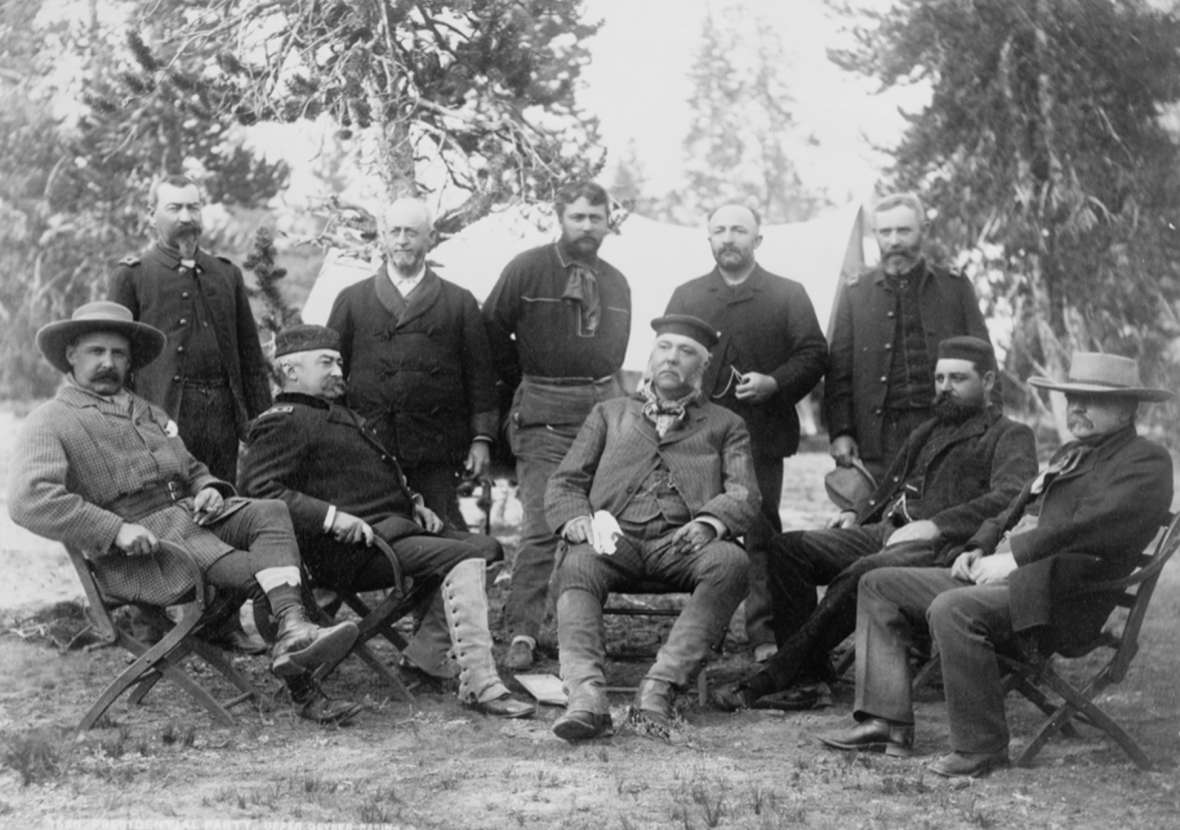
Sheridan had risen to national fame as a Union cavalry general in the Civil War when his troops laid waste to the Shenandoah Valley of Virginia. After the war, he commanded all the troops between the Mississippi and the Rocky Mountains, where he used similar tactics—encouraging destruction of the Plains tribes’ food supply to subdue them.
Arthur was born in Vermont and by the 1870s was well connected politically in New York City. He was elected vice president in 1880 and ascended to the presidency after President James A. Garfield was assassinated in 1881. He would not run for reelection in 1884.
Arthur also was an avid angler. Sheridan proposed a three-week horseback fishing expedition to Yellowstone. The president agreed.
Sheridan, who had visited the park twice before, would himself lead the party, which included a 75-man cavalry escort and 175 pack animals. In addition to Sheridan and President Arthur, members of the expedition included Secretary of War Robert T. Lincoln, the son of Abraham Lincoln; Sen. Vest and his son, George Vest, Jr.; Lt. Col. Michael V. Sheridan, Sheridan's brother; Montana Territorial Gov. John S. Crosby; Daniel G. Rollins, surrogate of New York—a kind of probate judge—an old friend of Arthur's; Brig. Gen. Anson Stager; Lt. Col. James F. Gregory; U.S. Army surgeon Maj. W.H. Forwood; Capt. Philo Clark of the 2nd Cavalry Regiment; and Frank Jay Haynes, the expedition photographer.
Sheridan took charge of the trip’s comprehensive planning. He made recommendations to members of the party concerning clothing and gear and provided Arthur with the following list of items to bring:
- Four sets winter clothing
- Four sets of summer under clothing
- Four outer woolen shirts, with pockets
- Two suits of rough clothes, one heavy and one ordinarily light
- One heavy winter overcoat, Ulster preferable
- One rubber coat
- One pair riding boots or shoes, with leggins [sic]
- One doz. pair socks
In addition, Arthur purchased $50 worth of new fishing gear for the excursion. The group would travel to southern Wyoming by train and proceed from there to Yellowstone first by wagon, then on horseback.
On Aug. 6, 1883, what came to be known as the President Arthur Expedition left Green River—in southwest Wyoming along the Union Pacific’s rail line—and traveled to Point of Rocks, east of Rock Springs, by horseback and spring wagon.
At Sheridan's insistence, no reporters would be allowed to accompany the expedition. Instead, most of the expedition's press dispatches—subject to review and approval by Arthur—would be written by Sheridan and Gregory.
That did not stop at least two reporters from trying. As reported in the Cheyenne Weekly Leader on Aug. 9, 1883, “The president and his party were much annoyed in Green River by two young men who asserted that they were reporters of the Chicago Times and Tribune.”
The reporters had planned to take the stagecoach to Fort Washakie, Indian agency for the Shoshone Reservation, a scheduled stop on the expedition’s route. But Sheridan “sent them word that if they went on their journey they would be arrested the moment they got on the reservation at Washakie,” the Leader noted. After they discovered the government chartered the stage, they “threw up the sponge . … These reporters did not know what to do to carry out their ‘assignment.’ They had never been west before, and were at the end of their string.” The Leader article further explained that “had they been fully competent,” they would have gone all the way to Yellowstone on horseback to get the story.
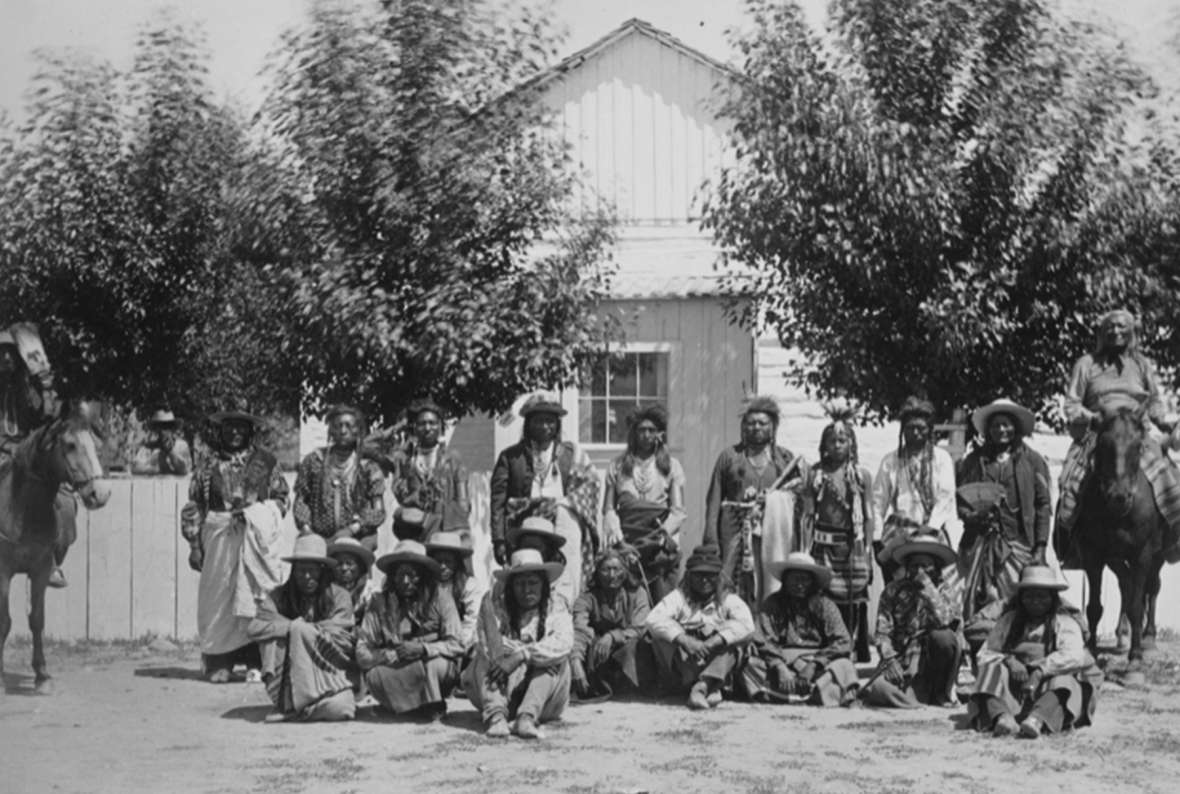
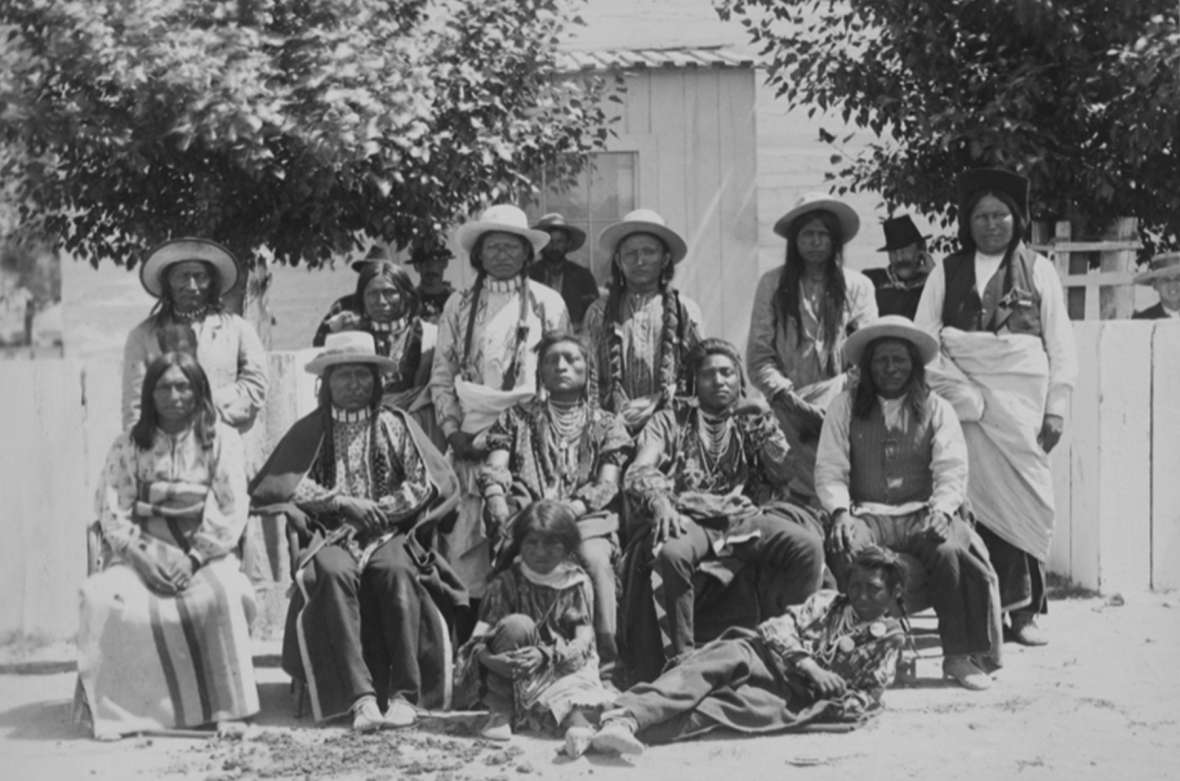
However, two courier relay lines were created to keep the expedition in contact with the outside world. The first ran from Fort Washakie to Shoshone Lake in the park, and the second from Shoshone Lake north to Fort Ellis in Montana Territory, east of present-day Bozeman. Cavalrymen were stationed at 20-mile intervals along both routes. Until mid-August, telegrams and mail for President Arthur and Secretary of War Lincoln would be sent to Fort Washakie and relayed up the line by mounted couriers; afterward, communications were directed to Fort Ellis, then carried south.
From Point of Rocks, the expedition turned north for Fort Washakie and the Indian reservation, where President Arthur and Sen. Vest met with Chief Washakie of the Eastern Shoshone tribe and Chief Black Coal, of the Northern Arapaho. Vest discussed with the chiefs a proposal under consideration in the Senate that would basically do away with the reservation system. Instead of the current system of tribal ownership of reservation lands—called “tenure in common”—Indians would adopt private land ownership, or “tenure in severalty.” Proponents of tenure in severalty professed their belief that private property ownership would encourage Indian assimilation and what they called “civilization” of the tribes. The fact that tenure in severalty would also open up huge swaths of Indian land for white settlement, mining, lumbering and other industries also was undoubtedly a factor in their thinking.
The response Vest received that day was unequivocal: “All the Chiefs expressed themselves against tenure in severalty,” Haynes, the photographer, noted in his published account.[1]
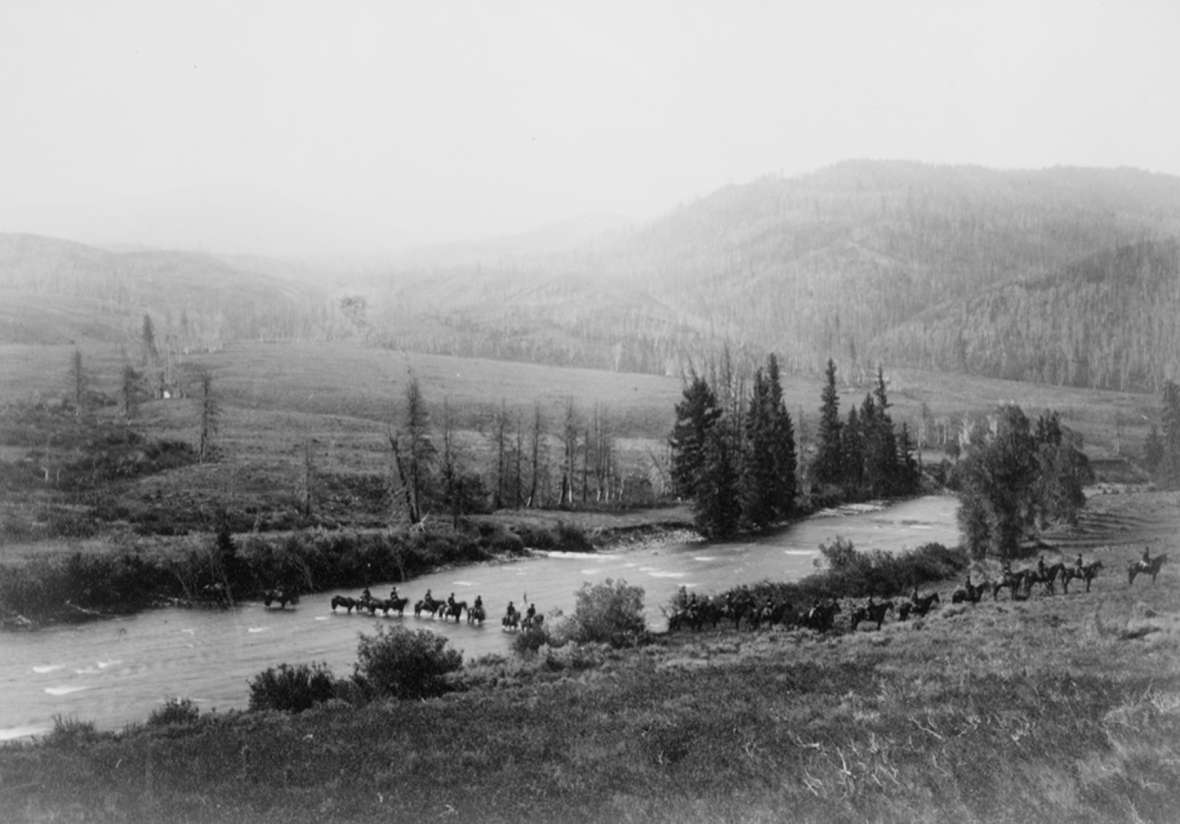
Leaving the wagons behind, the president’s party continued on horseback northwest along the east slope of the Wind River Range, turning west to cross over the Continental Divide at Lincoln Pass, known today as Sheridan Pass.
By that time, the Northern Arapaho tribe had also been living on the Shoshone reservation for five years in an arrangement, originally proposed as temporary, that was becoming more permanent every year. The president’s party enlisted an Arapaho guide, the sub chief Sharp Nose, to lead them through the mountains to the park.
On that journey Sharp Nose received word of the death, the previous January, of his son Little Chief at the Carlisle Indian School in Pennsylvania. Little Chief and a few dozen other Northern Arapaho and Eastern Shoshone children had been among the school’s first students when it opened in 1881. Sharp Nose, in his tent, cut off his long braids in the traditional sign of mourning. But he continued guiding the party. At the end of the trip, the president gave him a fine horse, a saddle, some gold coins and a certificate of thanks for his service. The certificate, according to Sharp Nose’s great granddaugther Yufna Soldier Wolf, remains in the family.
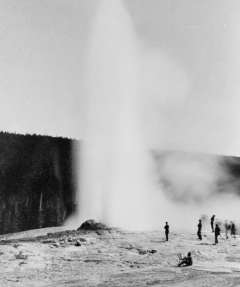
From Sheridan Pass, the president's party proceeded west down the valley of the Gros Ventre River, then turned north past the Tetons and Jackson Lake and entered Yellowstone on Aug. 23. [2]
Arthur was the first president to set foot in Yellowstone Park. The party’s stops as it continued north included Lewis Lake, the Upper Geyser Basin, Old Faithful, Yellowstone Lake, the Grand Canyon of the Yellowstone and Mammoth Hot Springs. Arthur was enthralled with the park—and he caught a lot of trout.
The expedition emerged from the park on Sept. 1 and continued on to Livingston, Montana Territory, where the group boarded trains.
Arthur’s trip and the publicity it generated helped Sheridan and other powerful supporters of protection for Yellowstone, particularly Sen. Vest, make their case for conservation, wildlife preservation and strict control of commercial concessions inside the park. After a hard fight, Vest was able to pass a resolution that obliged the Secretary of Interior to submit concession proposals and contracts to the Senate for approval and oversight.
Concessions were sharply curtailed. No railroad was ever built inside Yellowstone. The Yellowstone National Park Improvement Company went bankrupt in 1886.
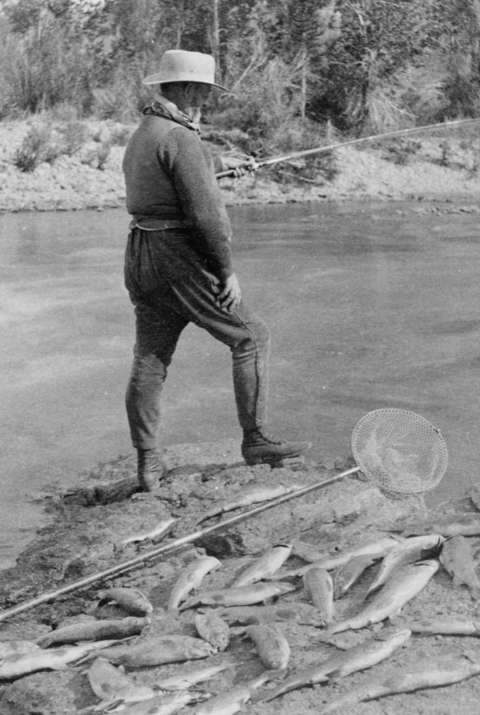
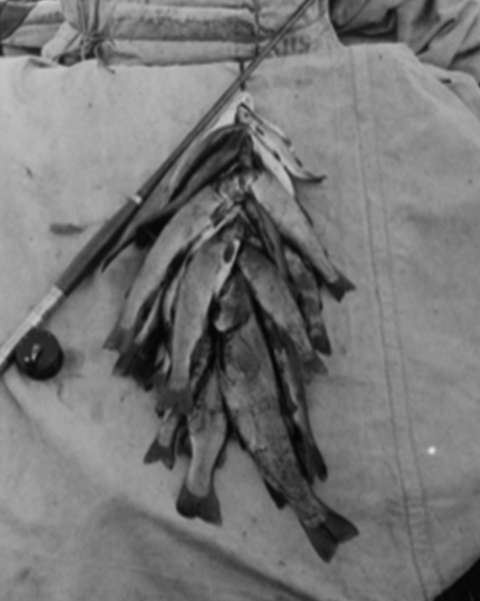
The legacy of Sheridan’s stewardship of Yellowstone extended well beyond his death in 1888. When, in 1886, the park’s management by the Interior Department proved a failure, he ordered that Company M of the 1st Cavalry, under the command of Capt. Moses Harris, then at Fort Custer in Montana, be stationed inside the park. The troopers built Camp Sheridan, later called Fort Yellowstone, at Mammoth Hot Springs and administered Yellowstone until the National Park Service was formed in 1916. The horse soldiers remained at Yellowstone until 1918. The facilities they left behind are now used as the Yellowstone National Park Headquarters.
Resources
References
- “Arthur in Cheyenne,” Cheyenne Weekly Leader, Aug. 9, 1883, 5. Accessed April 3, 2019 at http://newspapers.wyo.gov.
- Bartlett, Richard A. Yellowstone: A Wilderness Besieged. Tucson, Ariz.: University of Arizona Press, 1985.
- Gunn, Steven J. "Major Acts of Congress: Indian General Allotment Act (Dawes Act) (1887)." Encyclopedia.com. Accessed March 14, 2019 at https://www.encyclopedia.com/history/encyclopedias-almanacs-transcripts-....
- Hartley, Robert F. Saving Yellowstone: The President Arthur Expedition of 1883.Westminster, Colo.: Sniktau Publications, 2007.
- Haynes, Frank J. Journey Through the Yellowstone National Park and Northwestern Wyoming 1883; photographs of party and scenery along the route traveled and copies of the Associated Press dispatches sent whilst en route. [Place of publication and publisher not identified.] Accessed April 12, 2019 at https://www.loc.gov/pictures/item/2002696055/.
- Haynes, Jack Ellis. “The Expedition of President Chester A. Arthur to Yellowstone National Park in 1883.” Annals of Wyoming 14, no. 1 (January 1942): 31-38.
- Reeves, Thomas C. “President Arthur in Yellowstone National Park.” Montana The Magazine of Western History 19, no. 3 (Summer 1969): 18-29.
- Rydell, Kiki Leigh and Mary Shivers Culpin. “Managing the ‘Matchless Wonders’: A History of Administrative Development in Yellowstone National Park, 1872–1965.” National Park Service, 2006. Yellowstone Center for Resources, Yellowstone National Park, Wyoming, YCR-2006-03.
For further reading
- Jackson Hole Historical Society and Museum. “Jackson Hole & the President Arthur Yellowstone Expedition of 1883.” JHHSM website, accessed April 23, 2019 at https://jacksonholehistory.org/jackson-hole-the-president-arthur-yellowstone-expedition-of-1883/.
Illustrations
- The photos are all from photographer Frank Jay Haynes’s portfolio of images of the expedition, available online at the Library of Congress. The Jackson Hole Historical Society and Museum also offers an easy-to-view PDF of the portfolio.
[1] Frank J. Haynes, Journey Through the Yellowstone National Park and Northwestern Wyoming 1883, 10.
Four years later, in 1887, Congress passed the Dawes Act, which made tenure in severalty a reality and had a dire effect on tribal peoples. The Dawes Act was followed by more legislation in the same vein over the years, and by 1934, acreage in Indian hands had been reduced from 138 million acres to 48 million acres. For more on the Dawes Act, see “Fragmenting Tribal Lands: The Dawes Act of 1887” at /encyclopedia/fragmenting-tribal-lands-dawes-act-1887.
[2] Robert Hartley, Saving Yellowstone: The President Arthur Expedition of 1883, (Westminster, Colo.: Sniktau Publications, 2007), provides a detailed interactive map of the expedition's route at http://www.savingyellowstone.com/map.php.
